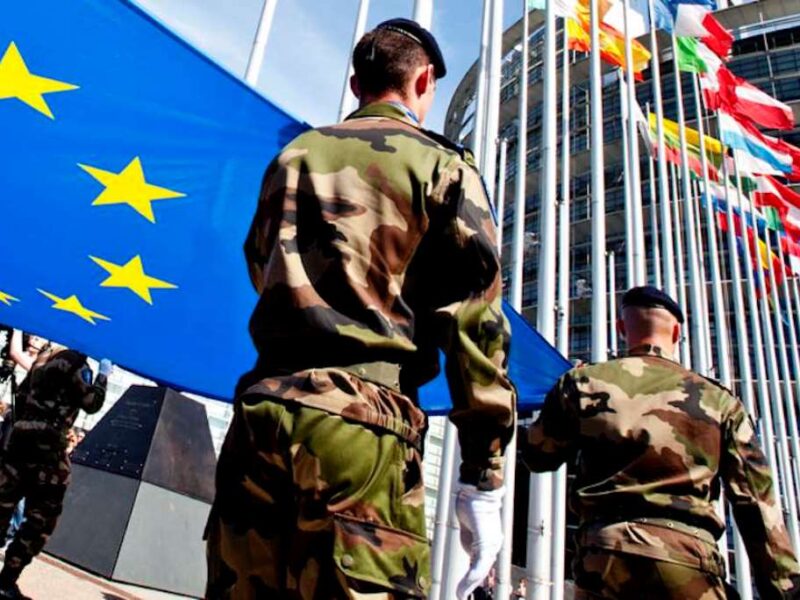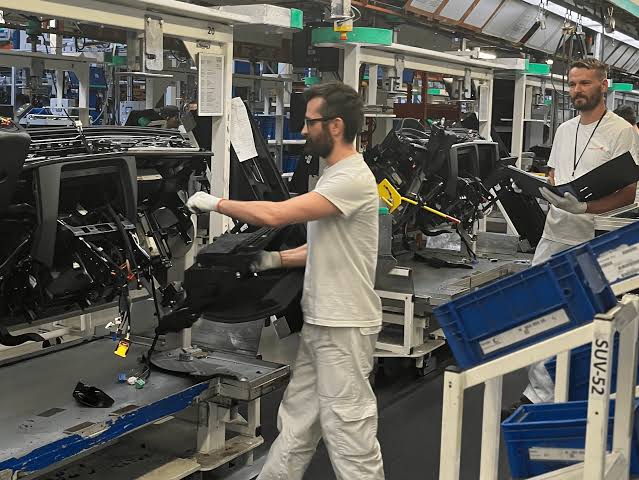Have you’ve ever wondered why the U.S. keeps so many troops and bases scattered across Europe, especially with all the headlines about global tensions these days, you’re not alone. As someone who’s followed military strategy for years—think late nights poring over maps and reports—I’ve always been fascinated by how these outposts aren’t just relics from the Cold War. They’re the backbone of NATO’s muscle, keeping the alliance strong and ready. In this post, we’ll unpack how U.S. military bases in Europe support NATO operations, from deterring threats to launching quick responses. We’ll hit the key spots, the day-to-day roles, and why it all matters in 2025’s shaky world. Grab a coffee; this is going to be a thorough ride.
A Quick History: From Post-War Foothold to NATO Powerhouse
Let’s start at the beginning, shall we? After World War II wrapped up in 1945, Europe was a mess—bombed-out cities, economies in ruins, and the shadow of Soviet expansion looming large. The U.S. didn’t pack up and head home; instead, it planted roots with bases that helped rebuild while staring down the Iron Curtain. By the late 1950s, nearly 475,000 American troops were stationed there, a clear signal: “We’re here to stay.”
Fast forward to 1949, when NATO was born as a pact among 12 nations to counter that Soviet threat. The U.S. bases became the alliance’s forward edge, hosting everything from fighter jets to command centers. The Cold War peaked with exercises that mimicked full-scale invasions, but even after the Berlin Wall fell in 1989, these installations stuck around. Why? Because threats don’t vanish; they evolve. Today, with Russia’s war in Ukraine dragging into its third year and hybrid threats like cyberattacks popping up, those bases are more vital than ever for NATO deterrence and defense.
Right now, as of early 2025, about 84,000 U.S. service members are forward-deployed in Europe under U.S. European Command (EUCOM). That’s not just numbers on a page—it’s real people, gear, and infrastructure woven into NATO’s fabric. These bases support everything from Article 5 collective defense (that famous “attack on one is an attack on all”) to crisis management far beyond the continent.
The Strategic Pillars: How Bases Bolster NATO’s Core Missions
At their heart, U.S. military bases in Europe are about three big things for NATO: deterrence, rapid response, and interoperability. Deterrence is the art of making sure bad actors think twice—think nuclear sharing or missile defenses that say, “Don’t even try it.” Rapid response means getting forces where they’re needed yesterday, whether that’s the Baltics or the Black Sea. And interoperability? That’s the glue ensuring American F-35s fly seamlessly with German Leopard tanks.
Take deterrence: Bases like those in Germany host U.S. tactical nuclear weapons under NATO’s nuclear sharing agreement. It’s a holdover from the Cold War, but in 2025, with Russia’s saber-rattling, it’s a stark reminder of the alliance’s resolve. Then there’s the European Phased Adaptive Approach for ballistic missile defense, with sites in Romania and Poland shielding against threats from rogue states or beyond.
For rapid response, these bases are launchpads. Operation Atlantic Resolve, kicked off after Russia’s 2014 Crimea grab, rotates U.S. brigades through Europe for training and deterrence. It’s all about speed—prepositioned stocks mean a brigade can gear up in days, not months. And interoperability shines in multinational exercises like Defender-Europe, where thousands from 20+ nations practice defending the eastern flank. I’ve seen footage of those; it’s like a massive, high-stakes chess game with real hardware.
ALSO READ: EUROPEAN COUNTRIES WITH NUCLEAR WEAPONS
Spotlight on Key Bases: The Unsung Heroes of NATO Support
Europe’s dotted with over 30 persistent U.S. bases and 18 access sites—airfields, garrisons, naval stations—you name it. But a handful stand out for their outsized role in NATO ops. Let’s walk through them country by country, focusing on how they plug into the alliance.
Germany: The Central Nervous System
Germany, which is one of Europe’s strongest military hosts the lion’s share—six major U.S.-controlled installations and the beating heart of EUCOM. Ramstein Air Base is the crown jewel: home to U.S. Air Forces in Europe–Air Forces Africa, it’s a massive hub for airlift, refueling, and command. From here, C-17s ferry troops to hotspots, and it’s the nerve center for NATO’s Allied Air Command. Remember the Kosovo air campaign in the ’90s? Ramstein orchestrated much of that. Today, it supports Ukraine aid logistics without direct involvement, routing supplies through safe channels.
Then there’s U.S. Army Garrison Stuttgart, headquarters for U.S. Army Europe and Africa. It oversees ground ops, including the V Corps forward command in Poland, which coordinates NATO’s eastern defenses. And don’t sleep on Spangdahlem Air Base—its F-16s and soon-to-arrive F-35s patrol NATO airspace, deterring anything sketchy over the Baltics. These spots inject billions into local economies too—Ramstein alone pumped $1.2 billion around its area in 2019.
Italy: Southern Flank Guardians
Down south, Italy’s got four key bases, anchoring NATO’s Mediterranean ops. Aviano Air Base, nestled in the Alps, houses the 31st Fighter Wing—the only U.S. fighter outfit south of the Alps. Its F-16s have flown in everything from Iraq to Libya’s 2011 no-fly zone enforcement. For NATO, Aviano’s a quick-reaction alert site; jets can scramble in minutes to intercept threats.
Naval Air Station Sigonella on Sicily is the unsung star—drones, special ops, and intel flights launch from here for Africa and the Middle East. It’s tied into NATO’s maritime ops, tracking subs in the Med. And Vicenza’s Caserma Ederle? Home to the 173rd Airborne Brigade, which parachuted into NATO’s Enhanced Forward Presence in Estonia back in 2022. Italy’s bases keep the alliance’s southern underbelly secure against migration crises or jihadi spillover.
United Kingdom: Atlantic Lifeline
The UK’s five U.S. bases bridge the pond, ensuring seamless transatlantic flow. RAF Lakenheath, the biggest U.S. Air Force spot in Britain, packs the 48th Fighter Wing with F-15s and F-35 stealth jets. These bad boys enforce NATO’s Iceland-to-Turkey air policing, scrambling for Russian Bears poking the airspace.
RAF Mildenhall handles the tankers and special ops C-130s, refueling strikes from Norway to the Balkans. And RAF Croughton? It’s the comms wizard, relaying secure lines for EUCOM and NATO HQ in Brussels. Without these, coordinating a multi-nation response would be like herding cats with tin cans and string.
Eastern Edge: Poland, Romania, and Beyond
Since Russia’s 2022 Ukraine invasion, the east has seen a surge. Poland’s Redzikowo Air Base now hosts an Aegis Ashore missile defense site, shielding NATO from Iranian or other ballistic threats— a game-changer for collective defense. Nearby, Powidz is building prepositioned equipment depots for rapid Army deployments.
Romania’s Mihail Kogălniceanu Air Base is exploding in size—a hub for Black Sea ops, hosting U.S. rotations and NATO’s eastern flank battlegroups. It’s got runways for heavy lift and ties into the Deveselu missile site. In the Baltics, rotational U.S. forces under Enhanced Forward Presence (eFP) in places like Ämari, Estonia, train with locals to counter hybrid threats.
Further south, Greece’s NSA Souda Bay is NATO’s Med logistics powerhouse, supporting carrier ops and sub hunts. And Spain’s Rota Naval Station? Four U.S. destroyers there pack Aegis BMD, zapping missiles mid-flight and forwarding NATO’s naval punch.
Training and Exercises: Forging NATO’s Ironclad Teamwork
Bases aren’t just parking lots for planes; they’re training academies. U.S. installations host massive drills like Steadfast Defender, NATO’s biggest since the Cold War, with 90,000 troops simulating Russian incursions. At Grafenwoehr in Germany, the Joint Multinational Readiness Center runs urban warfare sims, mixing U.S. Rangers with Polish paratroopers.
These exercises build “interoperability”—fancy talk for making sure everyone’s gear and lingo clicks. Post-Vilnius Summit in 2023, NATO upped the ante with new regional plans, stressing forward defense. U.S. bases provide the terrain, ranges, and observers to make it real. It’s not glamorous, but it’s what turns a paper alliance into a fighting force.
Logistics and Sustainment: The Unsung Backbone
War’s won on stomachs and spare parts, right? U.S. bases stockpile ammo, fuel, and med supplies under Army Prepositioned Stocks—think 30 days’ worth for a brigade, ready to roll from sites like Powidz. Ramstein’s warehouses feed ops from the Arctic to Africa.
Naval bases like Rota handle ship repairs and crew swaps, keeping the Sixth Fleet cruising. And air bases? They’re aerial gas stations, with KC-135s topping off fighters mid-mission. Without this sustainment net, NATO ops would grind to a halt faster than a tank out of diesel.
Intelligence, Surveillance, and Cyber: The Invisible Shield
In 2025, threats aren’t just bullets—they’re bytes. Bases like Sigonella run drone fleets for ISR (intelligence, surveillance, recon), feeding real-time data to NATO’s intel fusion centers. Ramstein’s got cyber defense teams shielding alliance networks from hacks.
Geilenkirchen in Germany hosts NATO’s AWACS fleet—those flying radars that spot incoming missiles or sneaky subs. U.S. crews fly half the missions, eyes on the skies 24/7. It’s this invisible layer that lets NATO stay steps ahead.
Challenges and the Road Ahead: Keeping the Alliance Agile
It’s not all smooth skies. Budget squeezes, host-nation politics (Turkey’s Incirlik access is always dicey), and shifting threats test the system. With U.S. eyes on China, there’s talk of rotational over permanent basing to free up cash. But experts like retired Gen. Gordon Davis warn: pulling back could embolden Moscow and Beijing.
Looking ahead, NATO’s 2024 Washington Summit pushed for more European contributions—think four baseline brigades from allies in the east. U.S. bases will adapt, maybe with more hypersonics or AI-driven logistics. The goal? A 360-degree posture against all comers.
Wrapping It Up: Why This Matters for Us All
So, there you have it—a deep dive into how U.S. military bases in Europe keep NATO ticking like a well-oiled machine. From Ramstein’s command roar to Aviano’s jet roars, these spots deter aggression, enable swift action, and knit allies tight. In a world where Ukraine’s fight echoes across borders, they’re not optional; they’re essential for the peace we often take for granted.
If you’re into this stuff, drop a comment: Which base intrigues you most? Or got questions on NATO’s next moves? Let’s chat. And if you found this helpful, share it—knowledge is power, especially when it comes to keeping the free world free.






